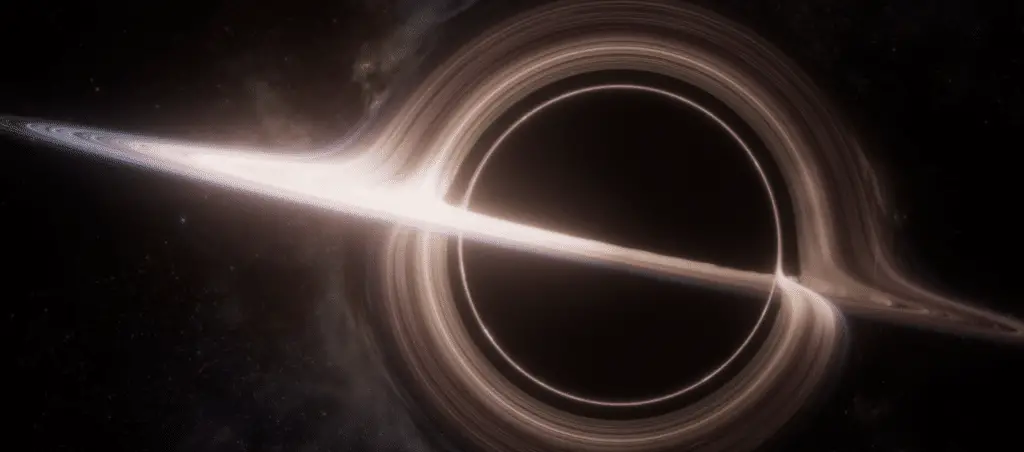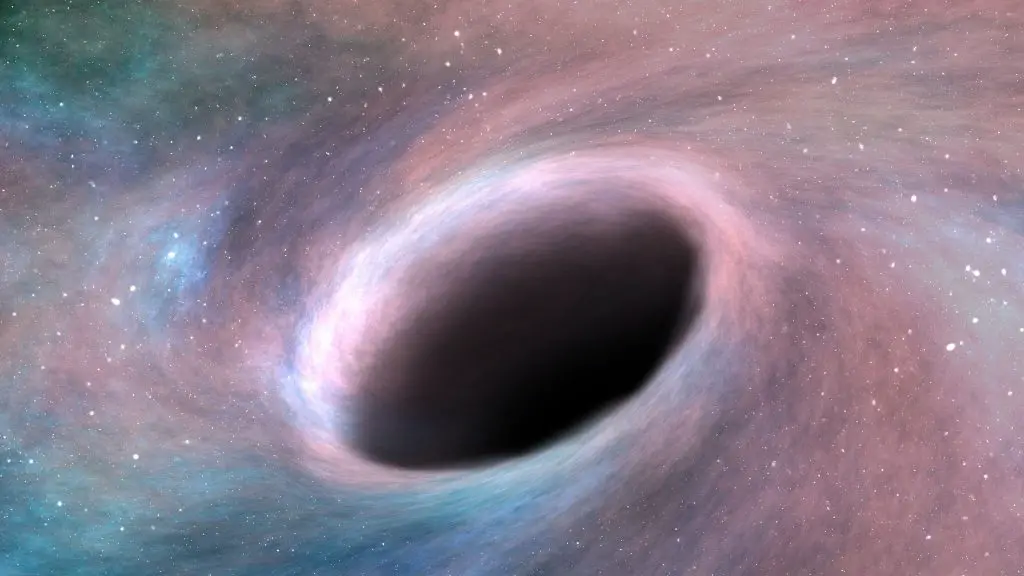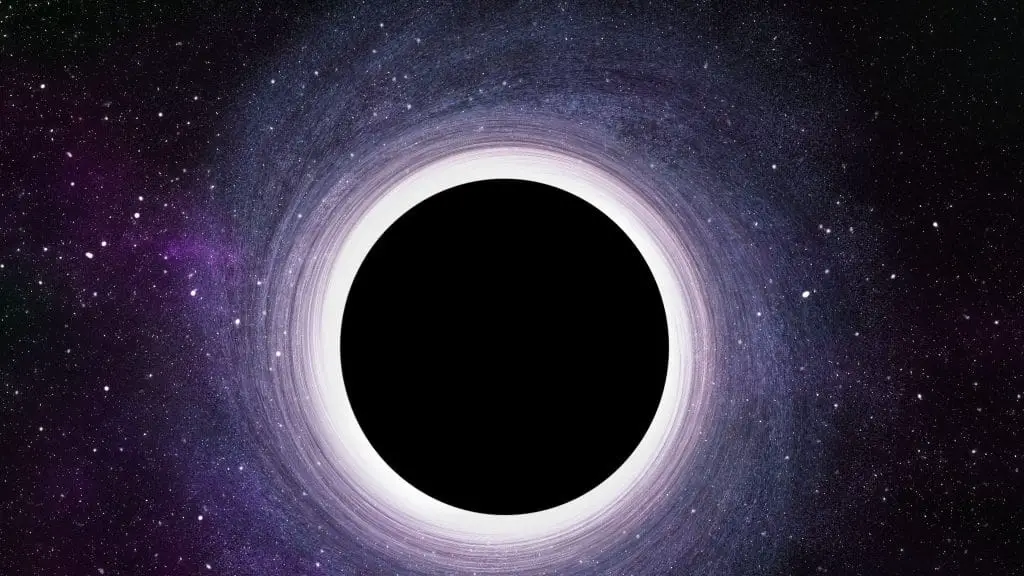A black hole is renowned for its immense gravity: it can swallow stars, planets and even other black holes. But it could a black hole consume the entire universe, piece by piece?
This is why a black hole cannot devour the Universe
In short, no. According to NASA, there is no way a black hole could devour the Universe, or even an entire galaxy. Here because.
Black holes are ex stars massive ones that have collapsed on themselves to become incomprehensibly dense, to the point that not even light can escape them. The idea that a black hole could swallow the universe is based on the misconception that they function like voids, sucking space toward themselves, said Gaurav Khanna, a black hole physicist at the University of Rhode Island. But is not so.
“They only swallow things that are extremely close,” Khanna said. In fact, black holes can only devour objects that venture into their event horizon – the point of no return of a black hole, beyond which there is no escape.
For example, the event horizon of a black hole the mass of the Sun would extend only 2 miles (3 kilometers). For a black hole with the mass of Earth, the event horizon would be just a few centimeters, like “the size of your thumb,” Khanna said.
A black hole’s gravity still impacts surrounding stars and planets – it might even cause them to orbit, as the black hole at the center of the Milky Way does – but it doesn’t swallow them.
York University astronomy professor Paul Delaney gave the following example in an article for the university’s website: “If our sun (miraculously) transformed into a black hole of the same mass, our planet would not notice no change in the gravitational force acting on it and continue in the same orbit,” he said. “It would get very dark obviously and very cold, but the gravity of the black hole at our distance wouldn’t be a problem.”

It’s also important to note that black holes are quite small, said Alexei Filippenko, a black hole expert at the University of California, Berkeley. For a black hole to have a reasonably high chance of swallowing a star, the star in question must be pointed almost directly at the black hole, he said.
Over time, this type of cosmic targeting can occur. But for the sun to be swallowed up by the black hole at the center of the Milky Way, for example, it would take a “truly enormous amount of time” for the star’s orbit to align exactly with the black hole.
Even the largest known black hole in the universe – a cosmic titan called TON 618, which weighs about 40 billion solar masses – appears to be close to the theoretical limit of how big black holes can get. This limit comes from the fact that, while large black holes gorge themselves with matter, they also release tons of radiation.
The radiation heats and ionizes the surrounding matter, making it harder for the gas and dust to cool and fall into the black hole, and ultimately slowing the rate at which the black hole can feed. This self-regulation prevents black holes from devouring entire galaxies, not to mention the entire universe.

Then there is the accelerated expansion of the universe to consider. As objects in space move further apart, they are less likely to collide and be captured by a black hole, Khanna said. If a black hole were to devour the entire universe, it would require a seismic shift in the direction the cosmos appears to be moving.
So you can rest easy, at least when it comes to giant black holes swallowing the universe. There is “nothing to worry about,” Khanna said. Unless, of course, the universe is already inside a black hole.
How is a black hole formed?
There is something intrinsically fascinating about black holes. Perhaps it’s because they are invisible beasts lurking in space that sometimes tear passing stars in half and scatter their remains. Whatever it is, these strange cosmic objects continue to fascinate scientists and laypeople alike.
Where do black holes come from? How are they formed and what gives them such extraordinary destructive power?
Before we can answer that, we need to ask an even more fundamental question: what is a black hole? “Basically, it’s an object or point in space where the gravitational pull is so strong that nothing can escape it,” said astrophysicist Neta Bahcall, of Princeton University in New Jersey. Light waves also get sucked in, which is why black holes are black.
These bizarre objects arise like phoenixes rising from the ashes of dead stars. When massive stars reach the end of their lives, the hydrogen they have fused into helium is nearly exhausted.
Then, these monstrous stars begin to burn helium, fusing the remaining atoms into even heavier elements, down to iron, the fusion of which no longer provides enough energy to support the star’s outer layers, according to the Swinburne University of Technology Center Australian astrophysics and supercomputing. These upper layers collapse inward and then explode as a powerful, bright explosion called a supernova.

Yet, a small part of the star remains behind. Albert Einstein’s equations of general relativity predict that if this remnant has about three times the mass of Earth’s sun, the powerful gravitational force of the remaining star will overwhelm everything else and the material it is made of will be squeezed into an infinitely small point with density infinite, according to NASA. The known laws of physics can’t actually handle such mind-boggling infinities. “At some point, they break and we don’t really know what happens,” Bahcall said.
If these stellar remnants are alone, a black hole will generally sit there without doing much. But if gas and dust surround the object, that material will be sucked into the maw of the black hole, creating bright bursts of light as the gas and dust heat up, swirling like water going down a drain. The black hole will incorporate this mass into its own, allowing the object to grow, Bahcall said.
If two black holes meet, the powerful gravity of each will attract the other and they will get closer and closer, rotating around each other. Their collective mass will shake the fabric of nearby space-time, emitting gravitational waves. In 2015, astronomers discovered such gravitational waves via the Laser Interferometer Gravitational Wave Observatory (LIGO).
“That was the first time we could actually see black holes and confirm that they exist,” Bahcall said, adding that the results were also a nice confirmation of Einstein’s prediction equations.
Scientists had already found indirect evidence of the existence of black holes by observing stars at the center of our galaxy, the Milky Way, orbiting a giant invisible object, Universe Today reported.

How these supermassive black holes – which may have billions of times the mass of our Sun – form is an open question, Bahcall said.
Researchers believe that these supermassive black holes were once much smaller, forming as more modestly sized black holes in the early days of our universe.
Over cosmological time, these objects absorbed gas and dust and fused together to grow, becoming colossal monsters. But many details of this story remain fuzzy, Bahcall said.
Astronomers have observed objects called quasars, which shine brighter than thousands of galaxies combined and are thought to be powered by supermassive black holes that consume matter. Quasars were seen as early as the first billion years after the Big Bang, when our universe formed, leaving scientists scratching their heads as to how such massive objects could form so quickly, Bahcall said.
“This highlights and adds complexity to the issue,” Bahcall said, and it remains a very active research topic.
#black #hole #devour #Universe